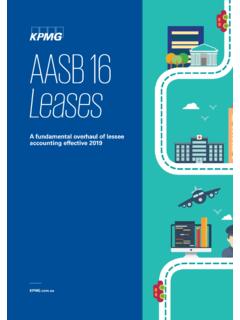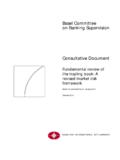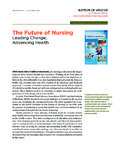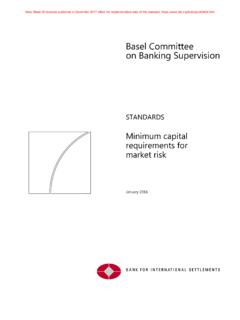Transcription of Global retirement savings guidelines
1 Engaging workers in financial planningGlobal retirement savings guidelines Insights into the purpose and development of Fidelity s integrated and globally-consistent set of retirement savings guidelines . Fidelity International & Fidelity Investments Workplace Investing Thought LeadershipAutumn 2018A decade on from the Global financial crisis, a combination of economic and social factors have contributed to a population around the world that may benefit from greater support around retirement planning. Faced with changes in pension schemes, workers could do with help ensuring their financial stability, especially funding their retirement . Around the world, rates of engagement in retirement planning are low, pointing to a need particularly in facilitating a beginning to the retirement conversation.
2 For example, in Hong Kong, a government survey found that of workers over 35 years old had not made any type of financial preparation for retirement beyond retirement protection from In the United Kingdom (UK), only 35% of adults have engaged in any sort of retirement planning and only 35% of defined contribution (DC) pension holders knew how much their employers were contributing, according to a financial regulatory body There are a number of legislative, social and corporate programs in many countries aimed at helping people improve how they prepare for retirement . These include auto-enrolment and escalating minimum contributions in the UK3, the new pension reform (Betriebsrentenst rkungsgesetz) in Germany4, reform of default investment under Mandatory Provident Fund (MPF) in Hong Kong, adjusting the public pension system in line with economic factors in Japan5, expansion to the Canada Pension Plan (CPP) in Canada6 and the Pension Protection Act in the United States7.
3 Despite such efforts, the retirement statistics above point to significant levels of unpreparedness and a lack of retirement planning literacy. This paper introduces a framework developed by Fidelity aimed at addressing this fundamental lack of engagement with retirement planning. Employers, as part of their workplace benefits offering, can play a key role in helping employees improve their retirement preparedness by offering clear guidelines and engaging tools. The globally- consistent framework and associated guidelines may have particular value for multinational employers, for whom it will provide the ability to evaluate benefits design and monitor/encourage good retirement savings habits in a consistent manner across their regional workforces. That said, these resources can be leveraged more broadly by individuals who are not necessarily part of a workplace savings scheme.
4 Fidelity s framework - and the retirement savings guidelines produced thereof - fill the underlying need for simple guidelines and tools to help workers maintain their lifestyle when they stop working. The initial focus of the methodology has been on the US, the UK, Canada, Germany, Hong Kong and Japan, because of the swiftly-changing retirement landscapes in those regions. 1 retirement planning and the financial situation in old age. Hong Kong Special Administrative Region Census and Statistics Department. Hong Kong, June 2013, p. 222, around 10,000 households Understanding the Financial Lives of UK Adults. Financial Conduct Authority, 19 Oct. 2017, 13,000 employees Increases in Minimum Contributions for Automatic Enrolment Pensions. The Pensions Regulator, ; and Peachey, Kevin.
5 Q&A: Pension Automatic Enrolment. BBC News, BBC, 8 Aug. 2013, 4 Betriebsrente Wird Attraktiver. Bundesregierung, 19 Dec. 2017, Japan s Pension Payments System Set for Overhaul. The Japan Times, #.WlS1lq1 LGmQ, 3 February 2017. 6 Backgrounder: A Stronger Canada Pension Plan. Department of Finance Canada. 11 Dec 2017. 7 Pension Protection Act of 2006. Unites States Government. 17 Aug 2006. SummaryFidelityGLOBAL retirement savings GUIDELINES3 IndexThe retirement Maths Framework: An Introduction 4 Four key metrics supporting the retirement savings guidelines 5 Income replacement rate 6 savings milestones 8 Yearly savings rate 10 Possible sustainable withdrawal rate 12 How the guidelines work together 13A regional comparison 14 United Kingdom 15 Germany 17 Japan 19 Hong Kong 21 Canada 23 United States 25 Implications for Global retirement planning 27 Appendix 28 Managing Complexity 30 FidelityGLOBAL retirement savings GUIDELINES4 The retirement Maths Framework An IntroductionThe retirement Maths Framework With a minimal set of customer inputs such as current age, current income.
6 And current retirement assets, the retirement Maths Framework produces an integrated set of retirement metrics which can serve as guidelines for yearly savings rate, income replacement rate, savings milestones, and possible sustainable withdrawal rate. To generate the retirement savings guidelines , the framework makes simplifying assumptions about other factors, including retirement age, retirement horizon, wage growth, asset allocation, and tax-deferred status. The base case assumes a hypothetical 25 year old with no current savings , and no private defined benefit (DB) pension income or other private lifetime income sources. All calculations and outputs are expressed in pre-tax terms. While the guidelines themselves are simple and engaging, a rigorous retirement planning methodology, accounting for regional differences, evaluates relevant income and expenditures data, accounts for complex pension systems and tax effects, and estimates capital market behaviour, underlies the guidelines are most appropriate for early and mid-career workers whose anticipated pre- retirement salary might be expected to fall within the salary ranges for each region (noted in the regional specific sections of this paper) used to estimate retirement income replacement ratios.
7 For those with anticipated pre- retirement incomes meaningfully outside of these ranges, the relevant income replacement ratio may differ and therefore the applicability of the retirement savings guidelines will be diminished. It should be noted that these income ranges reflect total household income at the point of retirement , and that for the purposes of generating the retirement savings guidelines (notably pensionable income and the resulting state/government and personal income replacement rates), we assume a two person addition, Fidelity believes that it s generally a good idea for everyone to undertake a comprehensive retirement planning process, using on-line planning tools and/or working with a guidance representative to create a retirement plan. This is particularly important for those within 10 years of retirement , The Fidelity retirement Maths Framework (RMF)8 is an integrated model for generating retirement metrics that can be used to set general retirement savings and retirement income guidelines .
8 The retirement Maths Framework provides an overall planning and analytical model that is designed to provide flexible retirement guidelines to employers and individual investors. 8 Fidelity retirement Maths Framework is the underlying methodology that drove the creation of the Fidelity retirement savings whom specific guidelines and suggestions can be provided based on a detailed assessment of individual goals and financial to the metrics being calculated interdependently, if any of the initial inputs are varied, the RMF will calculate a different, but still consistent set of guidelines . In addition to the internal consistency of output within its analytical framework, an important attribute of the RMF is that it provides a common structure, logical framework, and output (metrics), which, when combined with locally relevant assumptions, allows for the comparison of output ( guidelines ) and retirement planning behaviours both within and across RMF is intended to encourage greater customer engagement in setting retirement savings and retirement income goals.
9 The RMF also facilitates the development of consistent messaging in retirement thought leadership, planning tools, and guidance rules of thumb. The retirement Maths Framework unifies individual retirement metrics, generating consistent outputs, while also allowing for a more flexible end-user experience. In short, the framework supports the creation of broadly relevant, internationally consistent, retirement savings guidelines , which address a need for simple guidance and tools to help engage people across the globe in the process of planning for their retirement and helping to ensure that they can maintain their desired lifestyle in retirement . The critical first steps in the retirement planning process are engagement and education starting the journey and building confidence through learning and exploring.
10 The retirement Maths Framework and the retirement savings guidelines are designed to engage and to support individuals as they begin their retirement planning process. Because the four metrics are interconnected, people are encouraged to keep each in mind, and to understand how they work together, as they save for retirement and monitor their retirement savings GUIDELINES5 The four key metrics of the retirement savings guidelinesNote: Employers should ensure their defined contribution (DC) retirement plan design, where the majority of ownership falls to the employee, encourages individuals to begin to save early, save consistently, and save at a level that makes living a comfortable retirement an achievable goal. The right combination of plan design, engaging guidance and innovative tools makes saving and investing easier to understand, which may lead to better four retirement metricsThere is a strong need for active engagement in retirement planning across the world.






